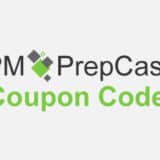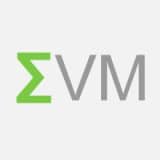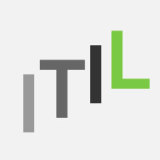[New] PMP Certification Study Notes 14 – Agile Practice Guide

Already updated/will be updated for PMP Exam in 2023.
Introduction: The Agile Practice Guide is a new complementary publication to the PMBOK® Guide 6th Edition only – no Agile Practice Guide for previous PMBOK® Guide versions.
The Agile Practice Guide was first published in Sep 2017 and the PMP Exam from 26 March 2018 will test Aspirants on the knowledge contained in this guide. Below you will find the last minute study notes for this Agile Practice Guide for Aspirants taking the PMP Exam.
Many Aspirants have the question that “how hard should one try to study this Agile Practice Guide”. According to many successful PMP Exam takers, the Agile part of the exam is only lightly touched on (i.e. only a few questions, possibly below 5 questions only). It is highly advised to focus the study on the PMBOK® Guide first and just read through this guide once to get the general idea. This should suffice for the current PMP Exam.
More information on my PMP certification exam preparation can be found at my PMP exam and certification journey here.
Article Highlights
Overview of the Agile Practice Guide
- Section 1: Introduction
- Why the Agile Practice Guide is published is because projects nowadays are often disrupted by the rapidly changing environments (technologies/demands/etc.), one of the drawbacks of traditional waterfall project management approach (predictive) is that changes are not easy to be implemented mid-way through the project. Agile project management (adaptive) is the now regarded an answer to embracing changes.
- Section 2: An Introduction to Agile
- the Agile Manifesto mindset, values, and principles — 4 Values, 12 Principles, many practices
- individual and interactions over processes and tools
- working software over comprehensive documentation
- customer collaboration over contract negotiation
- responding to changes over following a plan
- definable and high-uncertainty work
- definable work: with clear and proven procedures (from similar projects in the past)
- high-uncertainty work: complex, high-risk and prone to changes
- the correlation between Lean, the Kanban Method and Agile approaches
- Lean thinking: focus on value, small batch sizes, elimination of waste
- Agile and Kanban are subsets of Lean
- Kanban is based on lean thinking but used specifically for knowledge work
- Scrum, Crystal, XP, FDD, DSDM, etc. are subsets of Agile
- the Agile Manifesto mindset, values, and principles — 4 Values, 12 Principles, many practices
- Section 3: Life Cycle Selection
- various life cycles
- predictive life cycle: traditional approach with lots of planning
- iterative life cycle: allows feedback for improving the unfinished work as the project evolves
- incremental life cycle: provides deliverables (additional features) that customers can use immediately after each cycle
- Agile life cycle: both interactive and incremental in name, to refine the work and deliver usable products frequently
- Hybrid life cycle: making use of more than 1 types of development life cycles, to fit for the purpose of the project / as a transition strategy from predictive to Agile
- suitability filters — help to determine whether Agile approaches are suitable
- tailoring guidelines
- factors to consider: demand patterns, the rate of process improvement, the flow of work, 1 team or more, quality of product increments, the experience of Agile among team members
- common combinations of approaches
- combined Agile and predictive approaches
- predictive approach with Agile components
- Agile approach with predictive components
- various life cycles
- Section 4: Implementing Agile: Creating an Agile Environment
- critical factors to consider in an agile environment
- servant leadership to empower the team and remove organization impediments
- team composition
- agile roles: cross-functional team members, product owner, team facilitator
- members may be dedicated or multi-tasking/specialists or cross-functional
- critical factors to consider in an agile environment
- Section 5: Implementing Agile: Delivering in an Agile Environment
- organizing Agile teams
- common practices for teams to deliver value
- retrospectives — to review the lessons learned
- backlog preparation and refinement — a prioritized list of tasks (in the form of stories) yet to be completed
- daily standups — what has been done, what will be done, any impediments/risks/problems
- demonstrations/reviews
- execution practices: continuous integration, test at all levels, Acceptance Test-Driven Development (ATDD), Test-Driven Development (TDD), spikes (time-limited experiments)
- Agile measurements — story points (points are assigned to the stories of the backlog)
- Section 6: Organizational Considerations for Project Agility
- key organizational factors impacting Agile approaches
- culture (whether it is safe to fail for new initiatives), organization change management, readiness for change
- enhance business practices to support Agile
- the role of a PMO — Agile PMO is value-driven, invitation-oriented and multidisciplinary
- key organizational factors impacting Agile approaches
- Section 7: A Call to Action
- asks project professional to help to continue refining this Agile Practice Guide
- Extras
- Annexes — (mandatory) additional information
- Appendixes — (non-mandatory) additional information
- References — a list of references cited/listed in the Agile Practice Guide
- Bibliography — a list of additional readings
- Glossary — a list of terms used in the Guide with definition
Further PMP Study Resources
If you find the above PMP study notes from Edward useful, you may want to check out the following PMP Exam study resources on this website, they are available for free:
- PMP EVM Formulas Explained in Simple Terms — just enough for PMP Certification Aspirants to answer PMP questions correctly
- 20+ PMP EVM Mock Exam Questions — with detailed explanations and tips on answering PMP Maths questions
- PMP Glossary Flashcard
- 47+ Commonly Confused PMP Terms
Wish you PMP success!
Most Popular PMP Certification Exam Articles
- My Exam Prep Tips and Free Resources (I got 4P and 1 MP)
- How to Get 35 Contact Hours Fast and Easy?
- Detailed Comparision of online PMP Courses
- Over 1000+ FREE Quality Mock Exam / Practice Questions
- A FREE Guide to Formulas and Calculation (with explanation and sample questions)
- 47 Commonly Confused Terms with detailed explanation




 Hi, my name is Edward Chung, PMP, PMI-ACP®, ITIL® Foundation. Like most of us, I am a working professional pursuing career advancements through Certifications. As I am having a full-time job and a family with 3 kids, I need to pursue professional certifications in the most effective way (i.e. with the least amount of time). I share my exam tips here in the hope of helping fellow Certification aspirants!
Hi, my name is Edward Chung, PMP, PMI-ACP®, ITIL® Foundation. Like most of us, I am a working professional pursuing career advancements through Certifications. As I am having a full-time job and a family with 3 kids, I need to pursue professional certifications in the most effective way (i.e. with the least amount of time). I share my exam tips here in the hope of helping fellow Certification aspirants!






Other than PMBOK 6th edition, am I need to study the agile practice guide for PMP examination?
It will be best if you have the time to read the new Agile Practice Guide. But according to recent exam takers, there are just a few questions about Agile on the exam. Anyway, the Agile Practice Guide will allow you to immerse in Agile which is the current trend in project management. So it is highly recommended to read the guide.
Wish you PMP success!